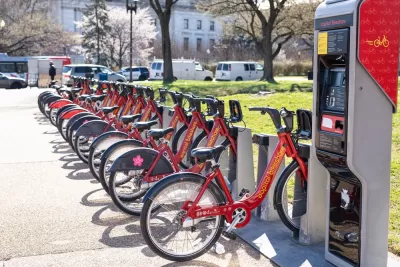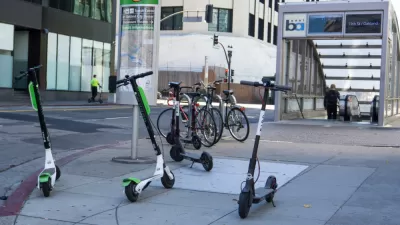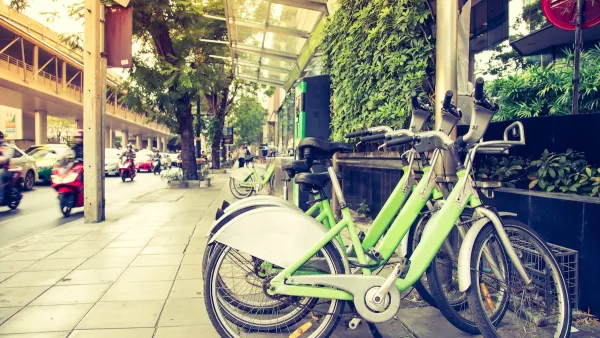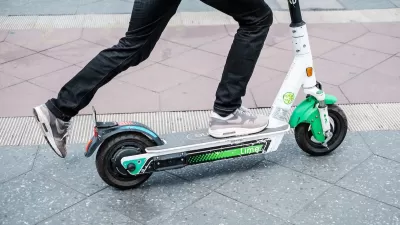Shared micromobility, particularly docked bikeshare systems, are seeing record growth, but ‘scooter inflation’ may cool riders’ enthusiasm.

U.S. bikeshare systems are bouncing back with a vengeance after the pandemic, reports Sarah Holder for Bloomberg CityLab, with systems around the country seeing ridership growth of 18 percent over 2019. “Of all the modes, docked bikeshare was most resilient, declining only 24% between 2019 and 2020 even as transit ridership plunged by 81% and car travel by 40%.” Numbers were more mixed for e-scooters, which some operators pulled from cities as ridership dropped. “Ridership nearly doubled between 2020 and 2021 to 62.5 million, making up more than half of the year’s overall micromobility users, but the number of trips was still 27% lower than in 2019.”
Even with pandemic setbacks, shared micromobility’s popularity has grown steadily. “Since the dawn of the tiny vehicle revolution in 2010, US ridership has reached half a billion total rides.”
Holder warns that despite this growth, rising prices could drive away riders. “To remain a viable transportation option for residents, however, the industry will need to get a handle on scooter inflation. No longer subsidized by a glut of investor capital, the average dockless e-scooter or e-bike ride cost $7 in 2021 — double or more than 2018 rates, making it pricier than the typical transit trip and more comparable with sharing an Uber or Lyft.”
Alex Engel, NACTO’s senior communications manager, also points to the need for safer infrastructure for bikes and scooters in many cities. “Beyond environmental or economic forces, the future popularity of micromobility will have a lot to do with how streets are designed and how systems reach riders.”
FULL STORY: Bikeshare Roars Back From the Pandemic

Maui's Vacation Rental Debate Turns Ugly
Verbal attacks, misinformation campaigns and fistfights plague a high-stakes debate to convert thousands of vacation rentals into long-term housing.

Planetizen Federal Action Tracker
A weekly monitor of how Trump’s orders and actions are impacting planners and planning in America.

In Urban Planning, AI Prompting Could be the New Design Thinking
Creativity has long been key to great urban design. What if we see AI as our new creative partner?

King County Supportive Housing Program Offers Hope for Unhoused Residents
The county is taking a ‘Housing First’ approach that prioritizes getting people into housing, then offering wraparound supportive services.

Researchers Use AI to Get Clearer Picture of US Housing
Analysts are using artificial intelligence to supercharge their research by allowing them to comb through data faster. Though these AI tools can be error prone, they save time and housing researchers are optimistic about the future.

Making Shared Micromobility More Inclusive
Cities and shared mobility system operators can do more to include people with disabilities in planning and operations, per a new report.
Urban Design for Planners 1: Software Tools
This six-course series explores essential urban design concepts using open source software and equips planners with the tools they need to participate fully in the urban design process.
Planning for Universal Design
Learn the tools for implementing Universal Design in planning regulations.
planning NEXT
Appalachian Highlands Housing Partners
Mpact (founded as Rail~Volution)
City of Camden Redevelopment Agency
City of Astoria
City of Portland
City of Laramie





























